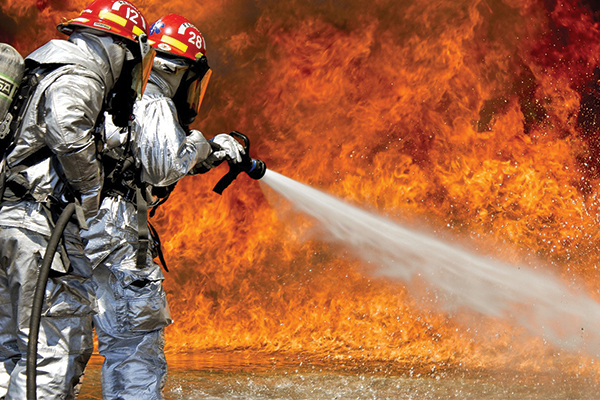PFAS removal, treatment and remediation
Per- and polyfluoroalkyl substances (PFAS), previously known as per- and polyfluorinated chemicals (PFCs) are pollutants that, due to reports of their global distribution, persistence, toxicity and bioaccumulation potential, are of increasing concern for public health and the environment. Of these substances, perfluorooctanesulfonic acid (PFOS) and perfluorooctanoic acid (PFOA) are among the latest chemicals to be categorised as Persistent Organic Pollutants (POPs) under the Stockholm Convention.
These compounds have been produced commercially since the 1950s and are used in a variety of consumer and industrial applications such as Scotchgard™ to protect fabric, furniture and carpets from stains, as mist suppressants in the metal plating industry, as hydraulic fluid in the aviation industry, as surfactants in the photography industry and as fire-fighting foams.
Known firefighting applications with PFAS include Aqueous Film Forming Foams (AFFF™) and Alcohol Type Concentrate (ATC™) that are used to extinguish Class B fires that involve flammable fuels. With its ability to migrate in water, PFAS can be found in soil, concrete, groundwater, surface water and sediments.

PFAS decontamination and treatment
The chemicals within the PFAS compound require decontamination and treatment before they are disposed of. When used in firefighting, AFFF™ must be collected and treated as soon as safely possible, as it may otherwise seep into the surrounding ground or water.
Cleanaway has specialised waste treatment technologies for PFAS, including:
Plasma arc destruction
Our Plascon technology can destroy pure polychlorinated biphenyls (PCBs) at a rate of 35 to 40kg/h, with no harmful emissions of dioxins or any other contaminants into the atmosphere. This is not high temperature incineration, but pyrolysis using a high temperature plasma arc in an inert, argon-filled environment.
Thermal Desorption™
Thermal Desorption™ is a physical separation process where heat is used to desorb (evaporate moisture and contaminants from solids). Evaporated contaminants are either converted to carbon dioxide and water or condensed and collected. The temperature in the Thermal Desorber vessel is increased above the boiling point of the organic compound to be removed.
Samples of the treated waste are analysed to verify complete decontamination prior to reuse, recycling or disposal. Solids including soil are typically treated at temperatures up to 550°C and retain their physical properties after treatment so that they can be beneficially reused.
Key customers
Why choose Cleanaway
More solutions for Hazardous Regulated Waste
Contact us directly on 13 13 39 or fill up one of these short forms. We will get back to you as soon as possible with your request or booking.
We are in every major city and region in Australia. Chances are you will find us not too far away from where you are. We’re in Sydney, Melbourne, Brisbane, Adelaide, and Perth, as well as Karratha, Rockhampton, Newcastle, Geelong, Port Augusta, Albury, and more.